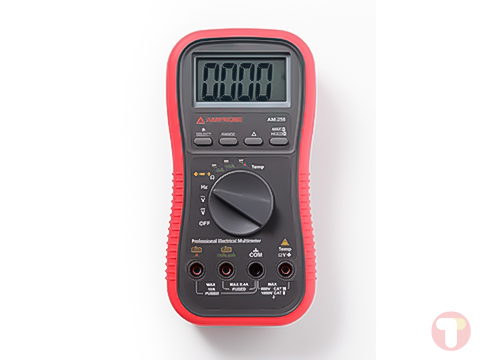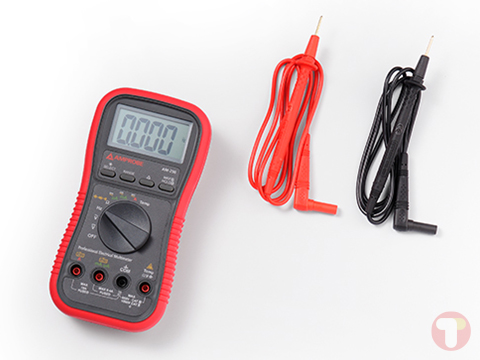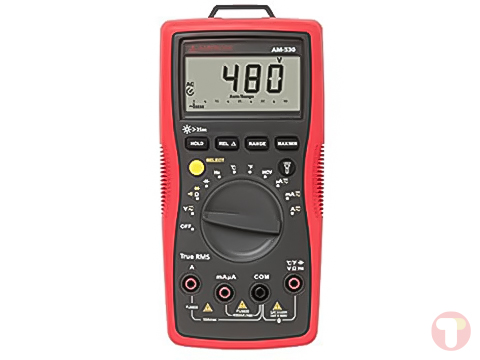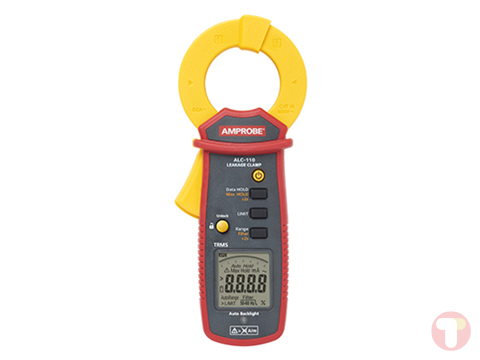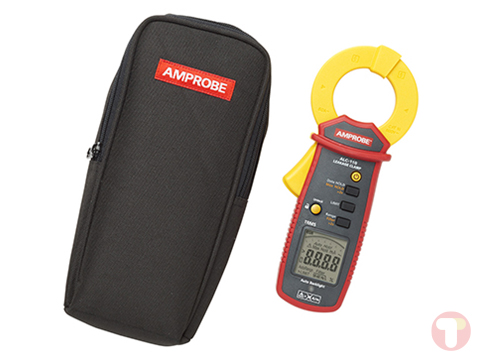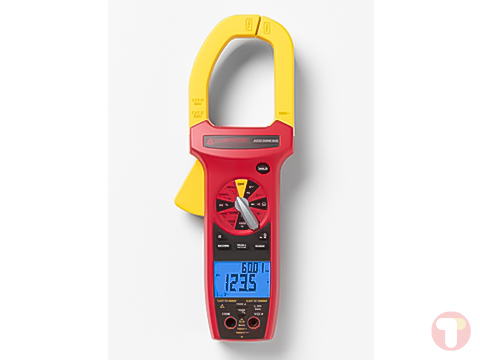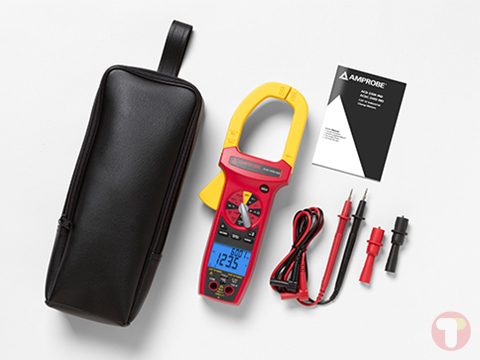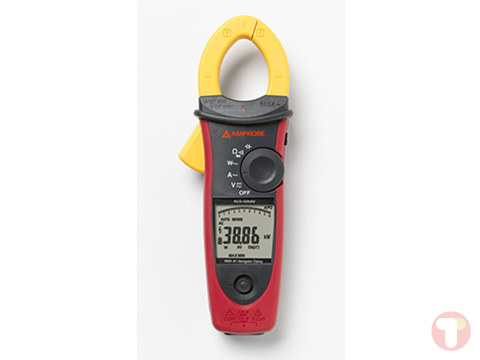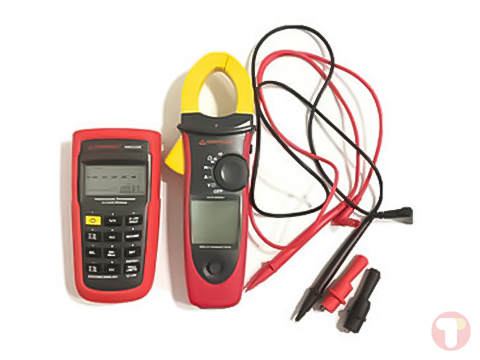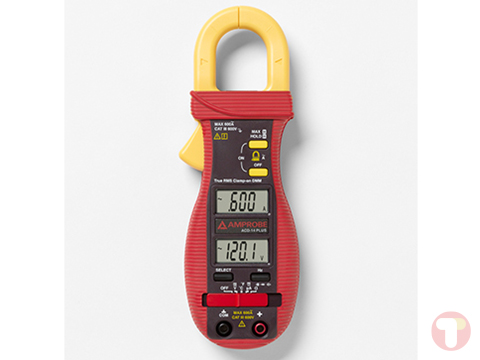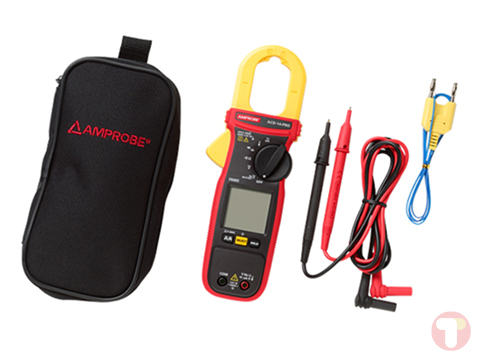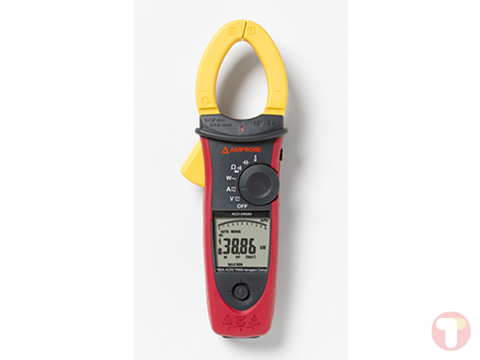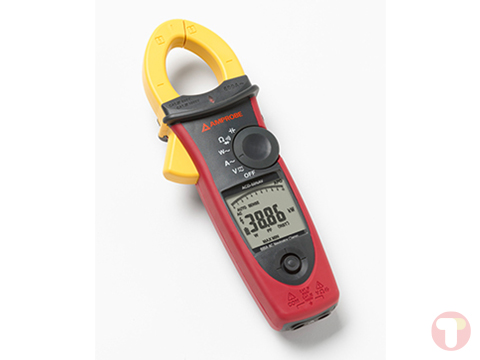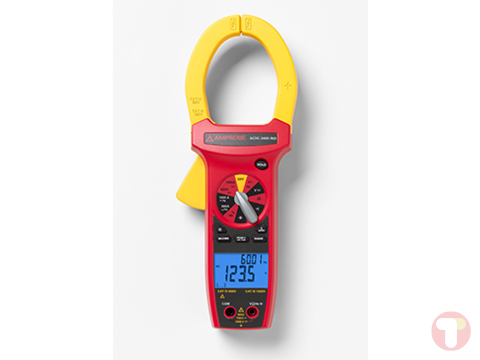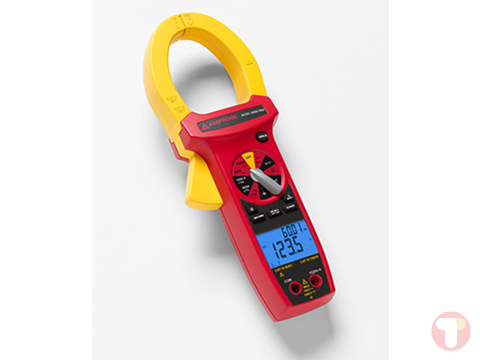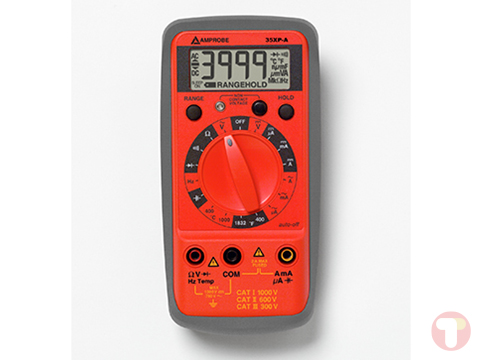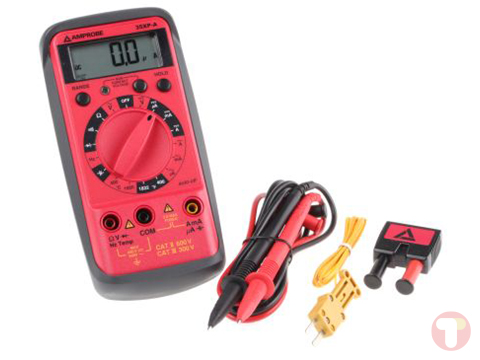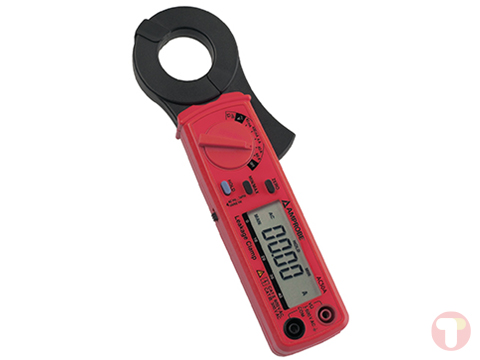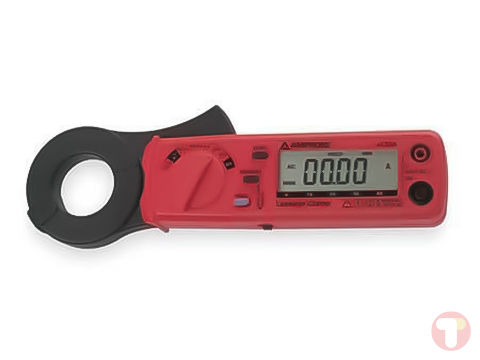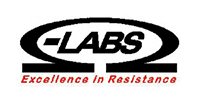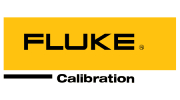The Amprobe AM-250 is a professional multimeter for Electrical and HVAC applications that is safety rated to CAT III 600V and CAT II 1000V for indoor applications requiring direct connection to main panel of the building. The Amprobe AM250 measures a complete range of electrical parameters including voltage, current, resistance and frequency. The AM-250 also covers HVAC applications with temperature, capacitance and micro amps functions.
The Amprobe AM250 features audible continuity, diode test, auto and manual ranging, and had a large, easy to read backlight LCD display. The AM-250 also has a BEEP-JACK audible warning against improper connection, and an auto power off.
Why you need a True-RMS Reading Multimeter
True-RMS instruments are accurate on any AC waveform. There are two basic AC measuring systems. One is “average sensing, RMS indicating.” This is the most common system because it is affordable and easy to manufacture. An instrument with this type of measuring system measures the average of a sine wave, and then multiplies it by 1.112, allowing the instrument to indicate RMS. This measuring system is only accurate on sine waves.
The second measuring method is called “RMS Sensing, RMS Indicating.” An instrument with this type of measuring system computes the RMS value of the measured waveform (sine or otherwise). This is referred to as “True-RMS” reading. This measuring system is accurate for any waveform. When an average sensing instrument is used on a non-sinusoidal waveform, measurement accuracy could be off as much as 50%. Since you may not know what type of AC waveform you are measuring, a True-RMS instrument should be used whenever possible.

